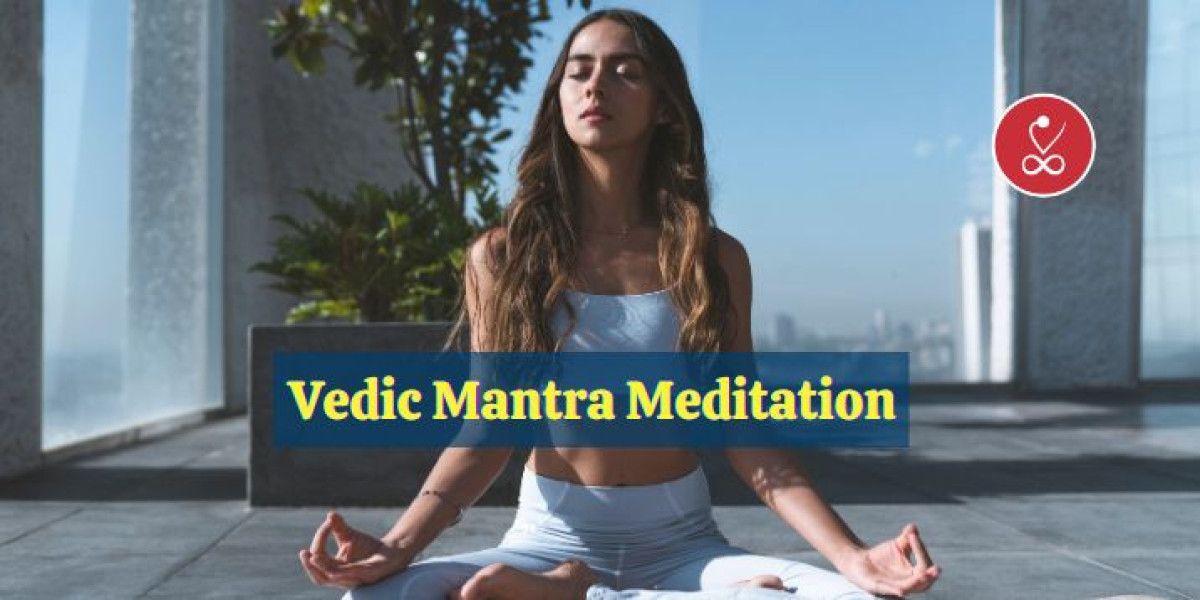Introduction of Vedic Mantra Meditation
Vedic Mantra Meditation is a powerful spiritual practice rooted in the ancient Vedic traditions of India, using sacred sounds or "mantras" to cultivate inner peace, focus, and a deep connection with the divine. This form of meditation combines mantra chanting with focus, intention, and often breath control, creating a pathway to reach higher levels of consciousness.
Key Elements of Vedic Mantra Meditation
Understanding the Mantra: A mantra is a sacred sound or phrase that holds spiritual significance. In Vedic mantra meditation, commonly used mantras include “Om,” “Om Namah Shivaya,” and “Gayatri Mantra.” Each mantra has a unique vibration and intention. For example, "Om" is known as the primal sound of the universe and is used for spiritual grounding, while the "Gayatri Mantra" is for wisdom and enlightenment.
Selecting a Suitable Mantra: Traditionally, a guru or teacher might recommend a mantra based on individual goals, mental state, or life phase. However, for beginners, universal mantras like “Om” or “Om Shanti” can be beneficial as they are easy to focus on and carry profound spiritual resonance.
The Role of Repetition: Repeating the mantra (called "Japa") is central to mantra meditation. This repetition, ideally done silently, aloud, or mentally, builds a rhythm and anchors the mind, preventing it from wandering. The repetition of mantras over time helps to reduce mental clutter, letting go of anxieties and fears, and brings about a state of tranquillity and clarity.
Intention and Focus: The power of Vedic mantras lies not only in their repetition but also in the intention behind them. Mantras are often chanted with a particular purpose or aspiration, whether for healing, peace, or spiritual awakening. This focus helps practitioners connect their inner intentions with the vibration of the mantra.
Breathing: Some practitioners incorporate breath control by aligning their breath with the mantra. For instance, inhaling on “Om” and exhaling on “Shanti” can deepen the meditative experience, regulate the breath, and centre the mind.
Mala Beads (Optional): Many practitioners use a "mala" (a string of 108 beads) to count repetitions of the mantra, which aids focus and marks progress. Each bead corresponds to one chant, and the process of moving through the beads can be calming and grounding.
Benefits of Vedic Mantra Meditation
Mental Clarity: Regular practice can help clear mental clutter and improve focus.
Stress Reduction: The calming effect of mantra chanting helps lower stress and anxiety levels.
Enhanced Spiritual Connection: Mantras connect practitioners with universal energy, aiding in spiritual growth.
Emotional Healing: The soothing vibrations of mantras can help release emotional blockages and foster healing.
Increased Concentration: The practice of focusing on a single sound trains the mind, enhancing concentration in everyday tasks.
How to Practice Vedic Mantra Meditation
Choose a Quiet Place: Find a comfortable, quiet place to sit, where you can focus without interruption.
Select Your Mantra: Start with a simple mantra like "Om" or "Om Namah Shivaya" if you're new to mantra meditation.
Begin Chanting: Close your eyes, take a few deep breaths, and start chanting your chosen mantra either aloud, in a whisper, or silently in your mind.
Focus on the Sound: Concentrate on the sound of the mantra, allowing it to guide your thoughts and breath.
Set a Time: Start with 5-10 minutes, gradually increasing as you get comfortable with the practice.
Observe the Mind: If thoughts arise, gently return your focus to the mantra without judgement.
The Spiritual Significance of Vedic Mantra Meditation
Vedic mantras have been recited for thousands of years, and their vibrations are believed to connect the practitioner with higher energies and universal consciousness. This ancient practice, based on the belief that sound shapes reality, is both a meditative and spiritual journey, leading to self-awareness, inner peace, and a deeper connection with the self and the universe.
In essence, Vedic mantra meditation is a path that combines sound and mindfulness to open doors to tranquillity, wisdom, and higher consciousness. It’s a simple yet profound practice that, with regular commitment, can transform the way we think, feel, and interact with the world around us.
Conclusion:
Vedic mantra meditation offers a profound way to connect with inner peace, clarity, and spiritual energy through the ancient power of sacred sound. By focusing on a mantra, practitioners can cultivate mental tranquillity, reduce stress, and enhance their spiritual growth. Regular practice not only sharpens the mind and deepens self-awareness but also aligns one's intentions with universal energies, fostering a sense of harmony and purpose in daily life. Vedic mantra meditation is a timeless, accessible path to holistic well-being and inner transformation.
FAQs on Vedic Mantra Meditation
Qus1: What is a Vedic mantra, and how is it different from other types of mantras?
Ans: A Vedic mantra is a sacred sound or phrase rooted in ancient Indian scriptures, specifically the Vedas. Unlike other mantras that may be contemporary or have a cultural focus, Vedic mantras are considered universal and hold deep spiritual and cosmic significance. They’re designed to connect the practitioner with higher consciousness and universal energies.
Qus2: How do I choose the right mantra for meditation?
Ans: For beginners, universal mantras like “Om,” “Om Shanti,” or “Om Namah Shivaya” are good starting points. Advanced practitioners might consult with a teacher or guru, who can suggest a mantra based on individual needs and spiritual goals. The most important thing is to feel a resonance or connection with the mantra.
Qus3: Can I practice Vedic mantra meditation without a guru?
Ans: Yes, many people start practicing on their own with simple mantras. However, guidance from a teacher can deepen the practice and help with correct pronunciation, intention setting.
Qus4: How long should I meditate with a mantra each day?
Ans: Beginners can start with 5-10 minutes daily and gradually increase the duration as they become more comfortable. Ideally, 20-30 minutes provides ample time for relaxation and connection, but consistency is more important than duration.
Qus5: Is it necessary to chant the mantra out loud?
Ans: No, you can chant it silently, mentally, or out loud. Each approach has its benefits: chanting aloud can help with focus and pronunciation, whispering makes it more internal, and mental chanting enhances concentration and connection with the mind.
Qus6: What role does breathing play in mantra meditation?
Ans: While mantra meditation doesn’t require strict breath control, aligning the breath with the mantra (e.g., inhaling and chanting “Om,” exhaling and chanting “Shanti”) can enhance focus and bring calmness to the practice.
Qus7: Can mantra meditation reduce stress and anxiety?
Ans: Yes, regular practice of mantra meditation can reduce stress by calming the mind, releasing tension, and promoting a relaxed state. The rhythmic repetition of the mantra also soothes the nervous system.
Qus8: How is Vedic mantra meditation different from mindfulness meditation?
Ans: In Vedic mantra meditation, focus is placed on repeating a sacred sound or phrase, while in mindfulness meditation, the focus is typically on observing thoughts, emotions, and sensations non-judgmentally. Both promote mental clarity and relaxation but use different methods.
Qus 9: Do I need to use mala beads in Vedic mantra meditation?
Ans: Mala beads (108-bead rosary) are optional but helpful, as they allow you to track the number of repetitions and add rhythm to your practice. They’re also a useful tool for grounding and focusing attention.
Qus10: Can I practice mantra meditation at any time of the day?
Ans: Yes, you can practice mantra meditation anytime, though early morning or evening is traditionally considered the best, as these times are calm and conducive to meditation.








